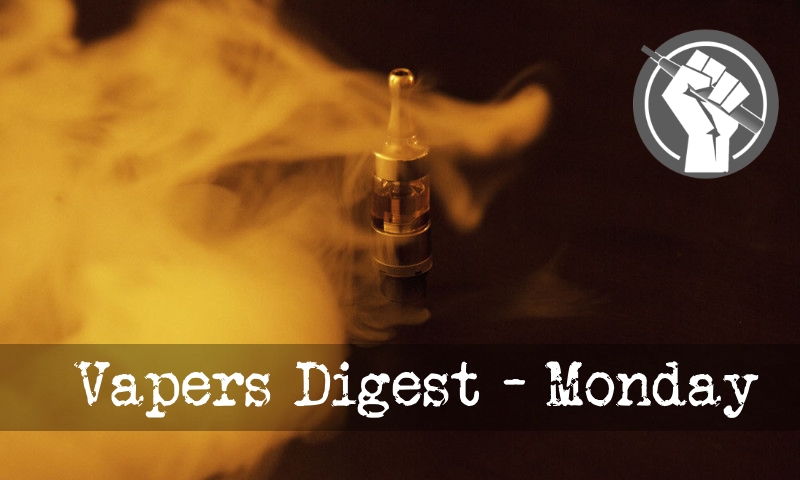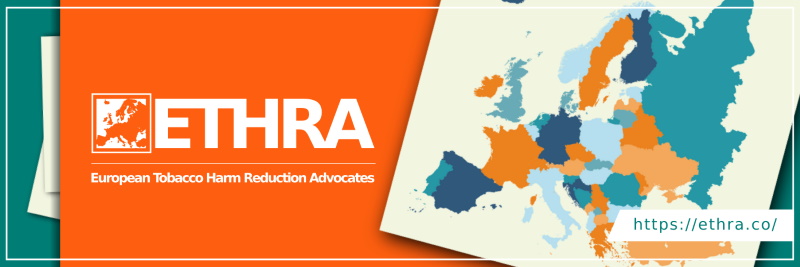Vapers Digest 3rd June

Monday’s News at a glance:
Realists and Idealists – Don’t let the government poach your pouch – Snus: Hooked on Nicotine (Channel 4) – Spanish vapers protest flavour ban – WHO Hits Out At Vaping Again – World Vape Day Championed – Thinking ’bout THR Newsletter – The World Health Organization risks credibility – Revenant Rule – Sweden’s smoking rate decline traced to smokeless products – Episode 21: Greg Troutman -Could Ireland’s aim to raise the legal age for tobacco use affect vaping products? – EU could have met smoke-free targets had it embraced harm reduction sooner
Realists and Idealists
Clive Bates – Tobacco Reporter
We should celebrate ‘realists’ and beware of ‘idealists.’ Idealists do well in the rhetorical world of goal setting, aspirations and optics while realists do better in the real world. The problem is that the idealists obstruct the realists.
On April 22, the British Medical Journal and a new investigative publication, The Examination, funded by billionaire activist Michael Bloomberg, declared a victory. Their “investigation” had shut down a new continuing medical education program in smoking, tobacco and nicotine offered by the respected medical information provider Medscape.
Don’t let the government poach your pouch
Christopher Snowdon
The days of Johan Cruyff and George Best having a crafty snout at half-time are long gone but professional footballers will always need a way to unwind and it seems that a growing number of them are turning to nicotine pouches. Last week, a report commissioned by the Professional Footballers’ Association found that one in five footballers who completed an online survey consume what the authors call “snus”. Another twenty per cent have used it at least once in the past.
Baseball players are well known for using chewing tobacco to help them concentrate, but although nicotine has the potential to be a legal and permitted performance enhancing drug in football, only 10 per cent of the men who used “snus” consume it during the match, whereas 86 per cent of them use it after training and 85 per cent use it after a game.
Snus: Hooked on Nicotine (Channel 4)
UK Documentary Review –
Tir Dhondy follows up the very watchable Hunting the Rolex Rippers by exploring the “epidemic” of people using a reduced-risk, legally available smoking alternative product. But if you think this show is a much-overdue celebration of the UK’s declining smoking rates, you might be disappointed.
Ostensibly, Snus: Hooked on Nicotine is a documentary. However, I always feel a little uncomfortable calling TV programs like this by that name. When someone says the word documentary, my mind is transported to work like Hoop Dreams, Capturing the Freedmens, O.J.: Made In America, the Act of Killing, and so on.
Now served with a community note. https://t.co/GN7it4wZp7
— Jukka Kelovuori (@jkelovuori) June 2, 2024
Spanish vapers protest flavour ban
Ali Anderson
Hundreds of Spanish vapers and small business owners held a demonstration outside the Ministry of Health on Friday to protest against the Spanish Government’s intended legislation to ban flavours in vaping products. The protest comes as the government considers whether to move forward with a Royal decree banning flavours in vapes, which was the subject of a public consultation last month.
Clearing the Air has covered the proposed ban extensively: our summary of the state of play and next steps is here (and here in Spanish). The demonstration – which was jointly arranged by both UPEV (small businesses) and ANESVAP (consumers) – was held to mark World No Tobacco Day, and a day after World Vape Day.
Two from Dave Cross, Planet of the Vapes:
WHO Hits Out At Vaping Again
“History is repeating itself,” writes the World Health Organization’s Dr Tedros Adhanom Ghebreyesus. He was talking about the tobacco industry selling nicotine to children, but he could’ve easily been talking about the succession of lies being carried by various WHO Twitter accounts. Or, he could have been talking about the nonsense contained in the latest report about vaping from the WHO.
The World Health Organization (WHO), strongarmed by Michael Bloomberg, and STOP, a global tobacco industry watchdog funded by Michael Bloomberg, have launched “Hooking the next generation,” a report claiming that the, “tobacco and nicotine industry designs products, implements marketing campaigns and works to shape policy environments to help them addict the world’s youth”.
World Vape Day Championed
The Coalition of Asia Pacific Tobacco Harm Reduction Advocates (CAPHRA) celebrated World Vape Day on May 30, 2024, by urging global leaders to recognise the life-saving potential of safer nicotine products and to expose the ongoing disinformation campaign led by the World Health Organisation (WHO).
The Science of Harm Reduction “Despite overwhelming scientific evidence supporting the reduced risk of vaping compared to combustible tobacco products, the WHO continues to ignore the facts and mislead the public,” said Nancy Loucas, a prominent New Zealand public health consumer advocate and executive coordinator of CAPHRA.
Thinking ’bout THR Newsletter
Kim “Skip” Murray
Why We Need World Vape Day More Than Ever. “There would be many more of us if the world’s 1.2 billion people who smoke weren’t exposed to massive amounts of misinformation about tobacco harm reduction. And that’s why we need World Vape Day—celebrated on May 30—more than ever.”
World No Tobacco Day Should Protect Youth and Help the 1.3 Billion Adults Who Smoke. “Alarmingly, public health agencies are giving cigarettes an advantage, despite mounting evidence that modern tobacco harm reduction products are not only less harmful than combustible cigarettes, but are also significantly reducing smoking rates among adults.”
The WHO risks credibility
With inaccurate attacks on vaping – Guy Bentley
May 31 marks World No Tobacco Day (WNTD), an annual event created by the World Health Organization (WHO) in 1987 to raise awareness about the harms of tobacco products. What was once a simple exercise in public health communication is now igniting discussion about whether the WHO itself is promoting incorrect or misleading information about the relative risks of different tobacco products.
The main point of contention surrounds the WHO’s position on e-cigarettes. In the weeks before this year’s WNTD, WHO released a report titled “Hooking the next generation: How the tobacco industry captures young customers.” The document contains recommendations and calls to action that would strike most people as unobjectionable, such as ensuring tobacco products aren’t sold or marketed to kids.
Revenant Rule
Stefanie Rossel
There’s life in the old dog yet: In March 2024, Canada relaunched a three-year-old plan to ban all vape flavors except tobacco, mint and menthol. The regulations were first published in June 2021 in the Canada Gazette, signaling the government’s intention to implement the flavor ban within six months after the obligatory public consultation. But the rule that was supposed to launch in January 2022 never came, and Canada’s health authorities never mentioned the flavor ban again—until Health Minister Mark Holland, in office since July last year, recently revived the idea.
Sweden’s smoking rate decline
Traced to smokeless products – Lenie Lectura
SWEDEN is likely to become the first country to achieve smoke-free status, with a smoking rate below 5 percent.
Sweden’s public health agency reported that only 5.6 percent of Swedish adults smoked cigarettes in 2022, down from 49 percent of men in 1960. The report titled “No Smoke Less Harm” attributed this achievement to Sweden’s openness to alternative nicotine products and details the significant health benefits associated with the transition.
The report, released by the Stockholm-based advocacy group Smoke Free Sweden, said that combustible cigarettes, not nicotine itself, are the primary culprit behind smoking-related illnesses.
Episode 21: Greg Troutman
Taxpayers Protection Alliance
Greg Troutman is a practicing attorney based out of Louisville, Kentucky and has been advising small e-cigarette manufacturers, retailers, and associations since 2013. Greg joins Martin and Lindsey on the podcast to discuss how vaping (and tobacco) regulations have been shaped by U.S. Court decisions, the current court cases regarding the U.S. Food and Drug Administration’s oversight of tobacco product applications, and the possibility of the U.S. Supreme Court determining whether tens of millions U.S. adults will have access to flavored e-cigarette products.
Two from Freddie Dawson, ECig Intelligence:
Could Ireland’s aim to raise the legal age..
For tobacco use affect vaping products?
Ireland will look to raise the minimum age for purchasing tobacco products to 21. The change will specifically not affect vaping products. It will also not affect nicotine pouches, which are currently only regulated as consumer products. Heated tobacco products would move to 21, as they are governed by tobacco product regulations in the country.
It could be said this still gives some sort of advantage to tobacco alternatives. After the “wash-through” period, allowing anyone who is already between the ages of 18 and 21 to continue to legally purchase tobacco products, the change could mean that alternative nicotine products would be the main legal avenue for those who start experimenting with cigarettes, despite their black-market status.
EU could have met smoke-free targets …
Had it embraced harm reduction sooner
If the EU had embraced harm reduction from the outset, it would have already achieved its smoke-free goals, according to a Swedish member of European Parliament (MEP).
Johan Nissinen (pictured), Swedish MEP with the European Conservatives and Reformists Group (ECR), said the EU should have followed the example of his home country in embracing harm reduction theories and allowing tobacco alternative products such as snus.
On this Day…2023
A look back at how things have moved on or otherwise…
Australia: a special kind of stupid
Christopher Snowdon, Velvet Glove Iron Fist
More bad news from the supposed world leader in tobacco control. Official figures show that teen smoking rates rose sixfold between 2018 and 2023, from 2% to 12.8%.
It’s been over a decade since Australia introduced plain packaging, a policy that the Southern hemisphere’s wrongest man, Simon Chapman, likened to a vaccine for lung cancer. Australia has had the highest cigarette taxes in the world for ages, the sale of nicotine e-cigarettes has always been illegal, and all they have to show for it is an insanely big black market for both tobacco and e-cigarettes, more children smoking and a whole bunch of people using unregulated vapes. The wowsers just can’t stop winning, can they?
Changing Gear
Clive Bates, Tobacco Reporter
In the unlikely event that I am appointed CEO of a large tobacco firm, this is what I would do to accelerate the transformation of the business.
First, I would ask if we really do want to transform the business and, if so, why. Until the board, thousands of staff, investors and stakeholders understand our rationale, what chance is there of bringing them on the journey? This is a more vexing question than it might appear at first sight. Perhaps we would be better off as we are? After all, we make terrific margins on cigarettes; we have tremendous pricing power courtesy of the tax authorities; we are embedded in a comfortable oligopoly that knows how to make money; and, of course, it helps that the product is addictive, and the customers are loyal to our brands.









